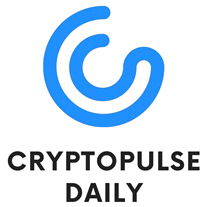Solana’s price action around the $130 level is drawing renewed attention as institutional capital flows into staking-enabled ETFs continue to climb. While short-term volatility persists, the combination of derivatives positioning, rising on-chain participation, and regulated staking products is reshaping how investors gain exposure to the Solana ecosystem.
Price and Derivatives Data Hint at a $130 Floor
SOL recently rebounded from the $130 region following a 25% drawdown from the $170s, with buyers re-entering after oversold readings on key momentum indicators. The weekly RSI has recovered from a low-liquidity pullback to neutral, historically a precursor to mid-cycle reversals for SOL.
Learn more: The Ultimate Guide to Solana NFT Marketplaces
In derivatives markets, open interest has climbed while funding has shifted from negative to slightly positive, indicating that traders are positioning for upside rather than fading rallies. Technical projections based on historical resistance zones place potential recovery targets in the $180–$200 range, with a high-end extension toward $250 if momentum accelerates and macro sentiment improves.
Parallel to technical signals, institutional entities and structured products have accumulated more than 24M SOL, reinforcing long-term positioning rather than short-term speculative rotation. This suggests price weakness is being met with strategic inflows rather than sustained distribution, though liquidity remains fragile.
Staking-Enabled ETFs Tighten Supply and Drive Yield-Based Demand
The launch of the Bitwise Solana Staking ETF (BSOL) marked a structural shift in how institutions access SOL exposure. The product tracks spot SOL while routing protocol staking yield back to investors, effectively turning the asset into a regulated, yield-bearing instrument rather than a purely speculative token.
| ETF | Type | Staking Enabled | Notable Yield | Launch Context |
| BSOL (Bitwise) | Spot | Yes | ~5% APY | First U.S. Solana ETF, launched under partial SEC shutdown |
| VanEck Solana Trust | Spot | Not Confirmed | N/A | Competes on institutional access |
| 21Shares SOL ETP | European | Yes (indirect) | Variable | Major presence in EU markets |
Solana ETF Landscape Overview
Across multiple issuers, Solana ETFs have attracted approximately $390M in net inflows, with total AUM exceeding $500M, representing roughly 0.7% of the circulating market cap. Some providers advertise returns near 5% APY, amplifying investor demand for staking-as-yield rather than price volatility.
By staking assets held in these funds, issuers are locking a growing share of circulating SOL into smart contracts, reducing liquid supply on exchanges. While this dynamic can support higher price floors over time and enhance network security, it may also amplify volatility when demand shifts and market depth tightens.
Learn more: Solana Price Prediction in 2025, 2026 – 2030 and Beyond
Early volume metrics sugest that Solana’s ETF launches ranked among the strongest altcoin ETF rollouts to date, aided in part by regulatory timing and first-mover advantage.
Liquidity, Institutional Allocation, and What Comes Next
Despite strong inflows into ETFs, SOL’s spot price performance has not reflected a one-way trend. The token has experienced sharp retracements even as issuers continued to accumulate, suggesting a divergence between long-term institutional positioning and short-term speculative selling.
Liquidity studies from independent analysts show that Solana’s market depth and execution costs are now comparable to Bitcoin and Ethereum, making it viable for larger capital deployment without excessive slippage – an important prerequisite for ETF scalability.
Some banking research desks estimate Solana ETFs could attract $3–6B within six months, following adoption patterns seen in Bitcoin and Ethereum ETFs, particularly if risk appetite returns to altcoins during macro expansion periods.
The path forward hinges largely on whether $130 can hold as structural support. If the level holds and derivatives positioning continues to lean bullish, the combination of staking-driven yield, reduced liquid supply, and growing institutional on-ramps could create a constructive environment for a multi-quarter recovery. If support fails, SOL may revisit deeper consolidation zones before forming a more durable base.
For now, Solana sits at a critical intersection of technical structure and capital rotation—where staking incentives and ETF inflows may increasingly shape price direction as much as speculative trading.

